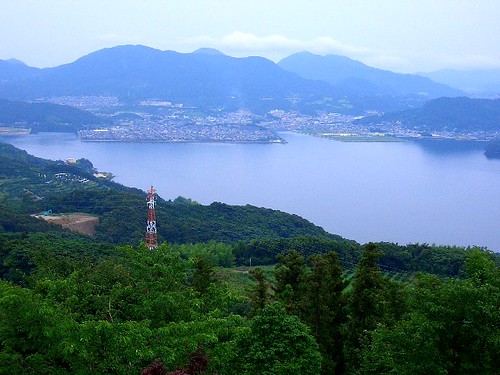February 3, 2009
Ministry Selects Four Areas for Fiscal 2008 Program to Restore Coastal Waters
Keywords: Ecosystems / Biodiversity Government Local government NGO / Citizen University / Research institute
The Japanese Ministry of the Environment announced on August 18, 2008, that it has selected four areas for the first year of its program to support local efforts to restore "sato-umi," or coastal waters where marine productivity and biodiversity are enhanced through the involvement of people. The program will continue for three years starting in fiscal 2008. The project areas selected were (1) Nanao Bay in Ishikawa Prefecture, (2) Ako Coast in Hyogo Prefecture, (3) Omura Bay in Nagasaki Prefecture, and (4) Nakatsu Tideland in Oita Prefecture.
Under this program, the Ministry supports "sato-umi" restoration activities by selecting areas where the local governments and communities are working together for the conservation of marine ecosystems and harmonious relations with the sea. Through the implementation of the program, the Ministry will also be collecting various information and data, which will be used as a basis of a "sato-umi" restoration manual.
The project in the Nanao Bay area will involve continuous collaboration among local municipalities, local residents, nonprofit organizations and universities, to take a fresh look at the rich natural environment and traditional culture in the area, and help local residents have better understanding of "sato-umi." The Ako Coast project intends to restore the healthy coastal environment by planting eelgrass in the tideland at the mouth of the Chikusa River. Various parties, including municipalities, residents, and nonprofit organizations, will participate in the activities.
The project in the Omura Bay area aims to restore the marine environment so that the finless porpoise can live in harmony with people. In cooperation with local governments, residents and nonprofit organizations, the project will organize finless porpoise watching events and examine ways to facilitate hands-on interaction with the natural environment. In the Nakatsu Tideland project, municipalities, residents, fisheries cooperatives and nonprofit organizations will cooperate with each other to restore "sato-umi," focusing on a traditional fishing method called "sasahibi" which was once popular in Nakatsu Tideland in Buzen Sea.
- Japan's Ministry of the Environment official website
http://www.env.go.jp/en/
Posted: 2009/02/03 06:00:15 AM
Related
"JFS Newsletter"
- 'What Are the Roles of Zoos Today?' - Interview with Director of the Popular Asahiyama Zoo
- Nishiawakura's Initiative for 100% Energy Self-Sufficiency, and a Municipal ICO Scheme
- 15-Year Integrated Forest Environment Education in Shimokawa, Hokkaido to Support Sustainable Forest Management
- Fifth Contest to Award Excellent Environmental and Social Practices by Junior High, High School Students
- Increase Revenues without Increasing Catches -- How the Sustainable Sakura Shrimp Fishery in Suruga Bay Does It



